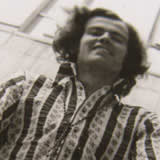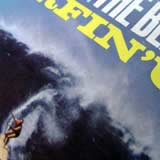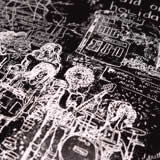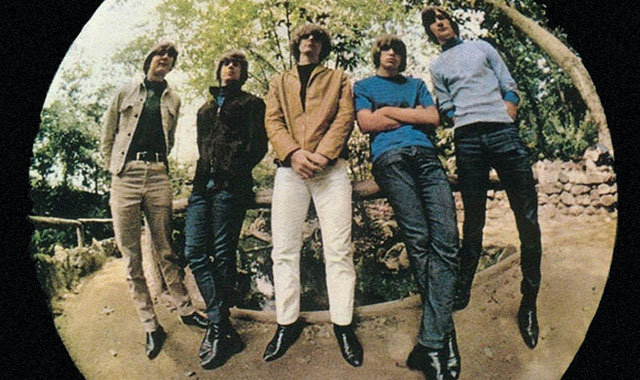
The cover of the first Byrds album: I can still remember hearing the opening chords of Mr Tambourine Man
Once forged, your musical tastes tend to stay remarkably constant over time, if my experience is anything to go by. But one of the nice things about the music playing Volans in recent years is that I have not only rediscovered The Beatles, but have also found myself immersed in the music of people like Elbow, Paolo Nuttini and Rufus Wainwright.
Among CDs I play fairly continuously, both at home and as I travel, are: albums of popular music from the ’30s, ’40s, ’50s and ’60s; Bob Dylan’s Tempest and Modern Times (the sort of music he was playing when Steve Warshal and I went to see him in concert some years back); Madeline Peyroux’s Careless Love and, with William Galison, Got You On My Mind; Raising Sand by Robert Plant and Alison Krauss; anything by Jools Holland and His Rhythm & Blues Orchestra, including Rockinghorse, large parts of which which we saw them play in Kew Gardens; Martin Taylor’s Gypsy Journey (we saw him at Ronnie Scott’s on Elaine’s 60th birthday); and Hugh Laurie’s Let Them Talk.
Finally, oddly, given that when sharing a study at Bryanston I liked The Beach Boys while my study-mate preferred The Who, the Sixties band whose music I continue to find surprisingly engaging after all this time is The Who.
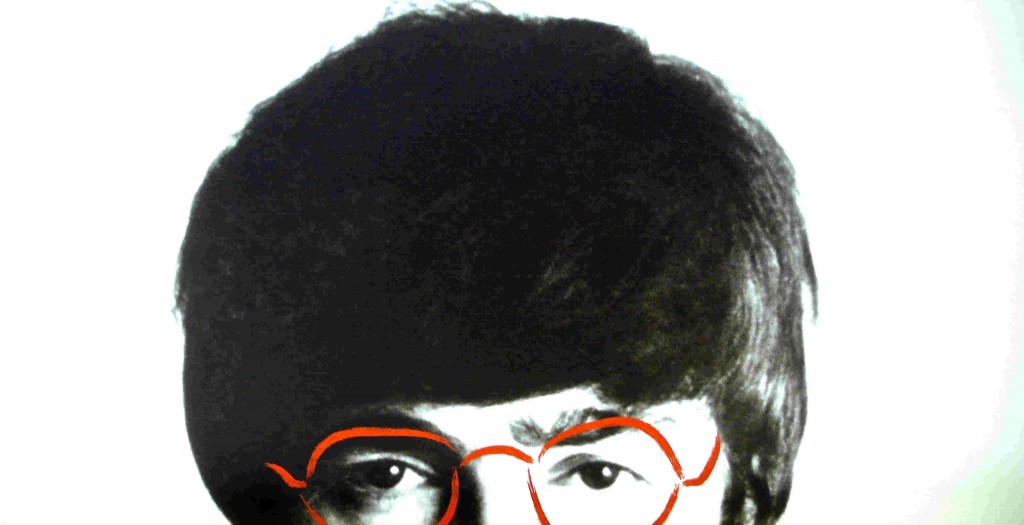 But if I had to name two people that had the biggest impact on me, they’re John Lennon and Brian Wilson
But if I had to name two people that had the biggest impact on me, they’re John Lennon and Brian Wilson
Music was there when we were children, but we weren’t drenched in it as we are today. Tim, my father, had a fairly eclectic taste in music, including Django Reinhardt and Stephane Grapelli, Wilbur de Paris, The Temperance Seven and various Polynesian albums he brought back in the mid-50s from his stint in Christmas Island – monitoring fallout from British H-bomb tests. Many of the tracks were written or arranged by Eddie Lund, and a fair few sung by Marie Mariteragi.
Looking back, those exotic albums whetted my appetite for what later was dubbed ‘world music’ – fed, too, by the experiments of people like George Harrison, Brian Jones, The Hollies (who played the first pop concert I ever went to) and Ry Cooder.
Much later, around 2013, I would stumble across Cesária Évora, and often listened to her album Mãe Carinhosa, and much later still on Amália Rodrigues – and her heart-rending song Barco Negro. See and hear it here: https://www.youtube.com/watch?v=8fZD5ol3rxI.
As the Elkington family travelled around in the 1950s, I recall various songs: for example, Davy Crockett, heard on a radio in the next door farm’s cow barn in Northern Ireland: “Born on a mountain top in Tennessee, Greenest state in the land of the free. in the woods so he knew every tree Killed him a ‘bar’ when he was only three. Davey, Davey Crockett, king of the wild frontier. Fought single handed through the Indian war, Till’ the Creeks were whipped and peace was in store, While he was handling this risky chore, made himself a legend forever more. Davey, Davey Crockett, the man who don’t know fear.”
And so martially on.
In the 1960s, I became much more interested in the history and cultures of North American Indian tribes, which is why both our daughters ended up with Indian names. No doubt some of that interest in other cultures, other sides of stories, came from living in places like Ireland and Cyprus, and visiting Israel.
For better or worse, my tastes in music were profoundly influenced by rock’n’roll. That said, through Tim’s mother Isabel and others, I also early on developed a taste for the popular music of the 1920s, 1930s and 1940s. Luckily, the bulk of my musical tastes I share with Elaine – including The Rolling Stones, who we first saw live in 2003. Their story embraces almost exactly the same years as the paradigm shift sketched by our waves analysis (see ‘About’ section). And that’s no accident, as the late Ian McDonald notes in his brilliant book, The People’s Music (Pimlico, ISBN: 1844130932).
The first single (45) I owned, Tim bought me: 1962’s smash hit, Telstar by The Tornadoes. They were the first British band to top the US charts, a full year before The Beatles and the rest of the British Invasion. The track featured an odd instrument, the clavioline, and the sound of a rocket taking off was apparently achieved by playing the sound of a toilet flushing backwards. Interestingly, given what Tim had been doing in the Pacific, the real Telstar satellite soon went silent: it is reputed to have had its circuitry destroyed by a nuclear test!
The first 45 I bought myself was 1964’s Not Fade Away by The Rolling Stones, backed with Little By Little. And the first LP I bought was Surfin’ USA by The Beach Boys. I remember listening to Radio Luxembourg on a tiny transistor radio under my dormitory pillow while at Bryanston. Apart from The Beatles, tracks that stick in my mind from that period are California Dreamin’ by the Mamas & Papas and Keep on Running by the Spencer Davis Group.
Almost 40 years later, in December 2002, to celebrate SustainAbility’s fifteenth anniversary, we had an away day in Regent’s Park College. One thing everyone was asked to do was to bring along a CD with the song that meant most to them. Before dinner, as a special surprise for me, a two-man group I had first heard in the subway at Hyde Park tube station played. With harmonies like those of The Everly Brothers, these were The Archers, two French brothers. Elaine had tracked them down and booked them: they sang mainly Beatles songs. Appropriate, since my chosen track was The Beatles’ Revolution.
While trying to work out my favourite track, I tried to whittle my favourites down to just eight, as for the BBC’s Desert Island Discs. I failed. So, for what it’s worth, my Top 16 at the time of writing are listed here.
|
|
|
|

